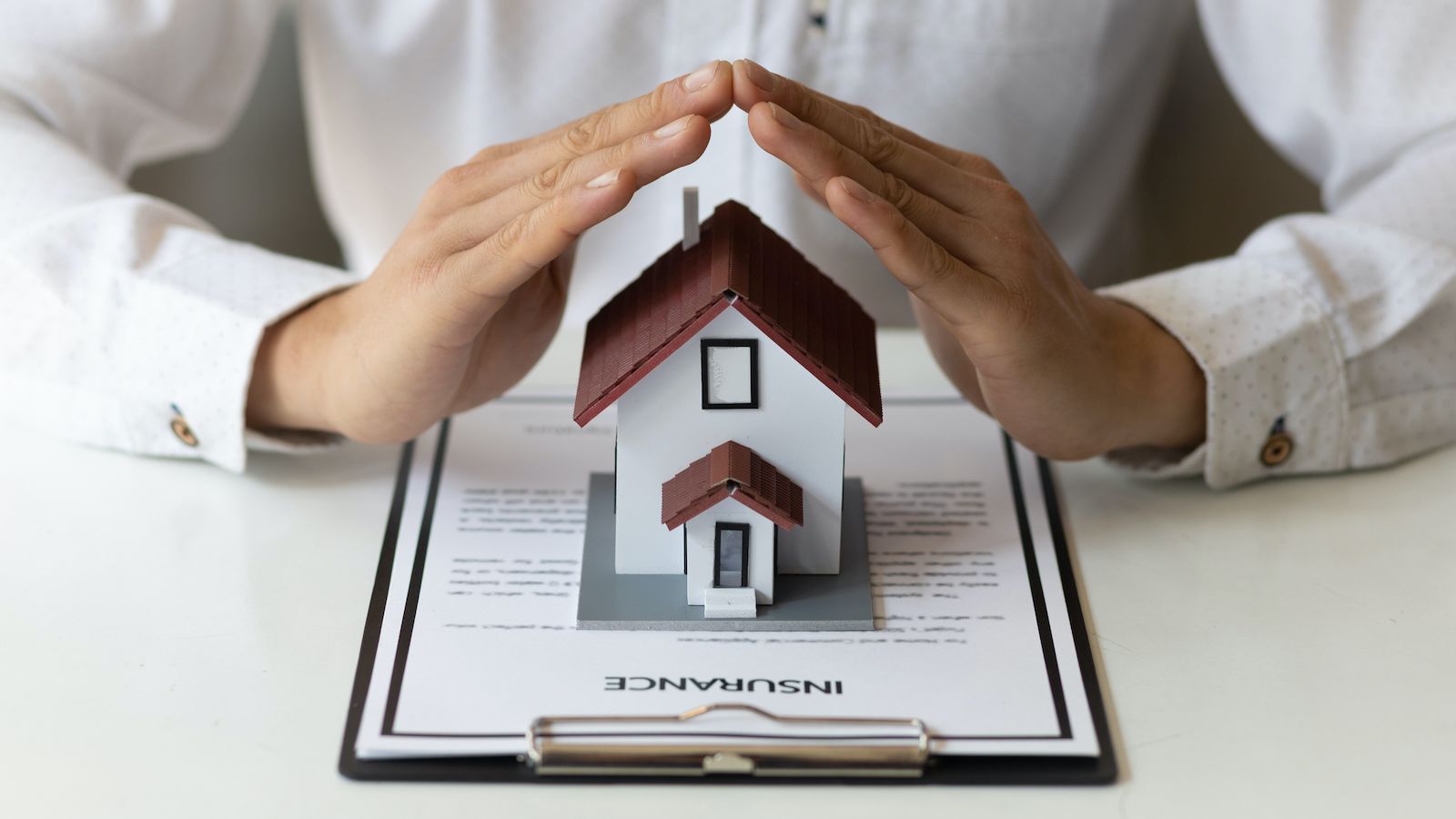What is home insurance?

Home insurance (also known as homeowners insurance) is a type of property insurance that provides financial protection to homeowners in case of damage to their homes or personal belongings, as well as liability for accidents that occur on the property. It typically covers a range of risks, including:
1. Dwelling Coverage: This helps pay for repairs or rebuilding if the physical structure of your home is damaged due to covered risks such as fire, windstorms, or vandalism.
2. Personal Property Coverage: This covers personal items in your home, such as furniture, electronics, clothing, and other belongings, if they are damaged, stolen, or destroyed by covered events.
3. Liability Protection: If someone is injured on your property or if you accidentally cause damage to someone else’s property, this can cover legal expenses or medical bills up to the policy limits.
4. Additional Living Expenses (ALE): If your home is uninhabitable due to covered damage, this helps pay for temporary housing, meals, and other expenses while your home is being repaired or rebuilt.
5. Other Structures: This part covers detached structures on your property, such as garages, sheds, or fences.
Home insurance policies vary based on the level of coverage, the location of the home, and the type of policy purchased, and certain natural disasters like floods and earthquakes are typically excluded, requiring additional policies.
What do I need to get a home insurance quote?
To get a home insurance quote, you’ll need to provide some key information about yourself, your home, and your coverage needs. Here’s a list of common details that insurance providers may ask for:
1. Personal Information
Name, address, and contact information.
Social Security number (sometimes required for identity verification and credit check, which can influence rates).
Marital status (some insurers offer discounts for married homeowners).
2. Property Information
Address of the home.
Type of home (single-family, condo, townhouse, etc.).
Year the home was built.
Square footage of the home.
Type of construction (e.g., brick, wood frame, or other materials).
The number of stories.
Roof type and age (the condition and material of your roof can impact your premium).
Age and condition of key systems (such as plumbing, electrical, heating, and cooling).
Home features (fireplaces, security systems, etc.).
Additional structures (such as a detached garage, shed, or fence).
3. Current Condition
Age and condition of the home.
Renovations or upgrades (if the home has been remodeled or systems have been updated, this could affect your premium).
4. Coverage Information
The desired coverage amount for the dwelling (the cost to rebuild the home).
Coverage for personal belongings.
Liability coverage amount.
Additional coverage (for special items like expensive jewelry or for additional perils like floods or earthquakes).
5. Current or Previous Insurance Information
Details about your current home insurance provider (if applicable).
Claims history (if you’ve made any home insurance claims in the past).
6. Home Security and Safety
Security systems (alarms, cameras, etc.).
Fire alarms, smoke detectors, and carbon monoxide detectors.
Fire extinguishers.
Proximity to a fire station or fire hydrant (can affect your premium).
7. Additional Occupants
Number of occupants in the home.
Pets (some insurers may ask about breeds for liability purposes).
By having this information ready, you can receive a more accurate home insurance quote. Some insurers may also conduct a home inspection before finalizing the policy.
What type of insurance do I need?
The type of home insurance you need depends on your specific circumstances, such as the type of home you own, your location, and the level of coverage you want. Here’s a breakdown of the most common types of home insurance policies to help you determine which one fits your needs:
1. HO-1: Basic Form
Coverage: This is the most basic form of home insurance and covers only specific named perils (like fire, theft, and vandalism).
Who Needs It: Homeowners looking for minimal coverage or those with few risks.
Limitations: This form is rarely offered, as it provides very limited coverage.
2. HO-2: Broad Form
Coverage: Covers more named perils than HO-1, including risks like falling objects or damage from the weight of snow or ice.
Who Needs It: Homeowners who want more comprehensive coverage than HO-1 but are still limited to specific perils.
Limitations: Doesn’t cover all risks, only the perils explicitly listed in the policy.
3. HO-3: Special Form (Most Common)
Coverage: Provides coverage for the structure of the home on an “open perils” basis, meaning it covers all risks except those specifically excluded (like earthquakes or floods). Personal belongings are covered on a named-peril basis.
Who Needs It: Most homeowners who want broad coverage for their home and personal property.
Limitations: Excludes certain perils like floods, earthquakes, and wear and tear.
4. HO-4: Renters Insurance
Coverage: Covers a renter’s personal belongings and liability, but not the physical structure of the building (which is the landlord’s responsibility).
Who Needs It: Renters who want to protect their personal belongings and have liability coverage.
Limitations: Does not cover the building structure itself.
5. HO-5: Comprehensive Form
Coverage: Offers the most extensive coverage for both the home and personal property on an “open perils” basis, meaning nearly everything is covered unless specifically excluded.
Who Needs It: Homeowners with valuable belongings or who want maximum protection.
Limitations: More expensive, and exclusions (like floods and earthquakes) still apply.
6. HO-6: Condo Insurance
Coverage: Provides coverage for the interior structure of the condo (usually walls, floors, and ceilings), personal property, and liability. It complements the master insurance policy of the condo association, which covers common areas.
Who Needs It: Condo owners who need coverage for their unit’s interior and personal belongings.
Limitations: Coverage depends on what the condo association’s master policy covers.
7. HO-7: Mobile Home Insurance
Coverage: Designed specifically for mobile or manufactured homes, offering protection similar to HO-3 policies but tailored to these types of dwellings.
Who Needs It: Owners of mobile or manufactured homes.
Limitations: May not cover all risks that apply to traditional homes.
8. HO-8: Older Home Insurance
Coverage: Offers coverage for older homes where the cost to rebuild may be higher than the market value. It often uses actual cash value rather than replacement cost.
Who Needs It: Owners of historic or older homes that might be difficult or costly to rebuild with original materials.
Limitations: May not cover full replacement costs, making it less favorable for homes requiring specialized materials.
Key Considerations to Determine the Right Policy:
1. Type of Home: Is it a single-family home, condo, or mobile home?
2. Value of Home and Personal Property: Higher-value homes and possessions may require more comprehensive coverage.
3. Location: If your home is in an area prone to natural disasters (e.g., floods, earthquakes), you may need additional insurance.
4. Liability Concerns: If you frequently have visitors or have higher-risk features like a swimming pool or trampoline, consider higher liability coverage.
5. Mortgage Requirement: If you have a mortgage, your lender will usually require you to have a certain level of coverage (often an HO-3 policy or better).
For most homeowners, an HO-3 policy is the best fit, offering broad coverage at a reasonable cost. If you own a condo, an HO-6 policy is ideal. Renters should go with HO-4. Depending on your specific situation, you may need to add additional coverage like flood insurance or earthquake insurance.
How much does home insurance cost?
The cost of home insurance varies based on several factors, including the location of your home, its value, the level of coverage, and personal factors like your claims history. However, here are some key factors that influence the cost and average price ranges:
Average Cost of Home Insurance
In the U.S., the average cost of home insurance is around $1,200 to $1,500 per year for a standard HO-3 policy with $250,000 in dwelling coverage. However, prices can vary widely based on location and other factors.
Factors That Influence Home Insurance Costs
1. Location:
State and city: Homes in areas prone to natural disasters (hurricanes, wildfires, tornadoes, earthquakes) tend to have higher premiums.
Proximity to fire services: If you live near a fire station or hydrant, you may get lower rates.
Crime rates: Homes in areas with high crime rates may face higher premiums due to the increased risk of theft or vandalism.
2. Home Characteristics:
Replacement cost: The cost to rebuild your home is one of the main drivers of your premium. Larger or more expensive homes have higher insurance costs.
Age and condition: Older homes or homes with outdated systems (like plumbing or electrical) tend to cost more to insure because they’re seen as higher risk.
Construction materials: Brick homes often cost less to insure than wood-frame homes because they’re more resistant to fire and weather damage.
Roof type and age: Newer or more durable roofs (like metal roofs) may qualify you for discounts, while older roofs may raise your premium.

3. Coverage Amounts:
Dwelling coverage: Higher coverage limits mean higher premiums. For example, insuring a home for $500,000 will cost more than insuring one for $250,000.
Personal property coverage: If you want additional coverage for valuable items (like jewelry or electronics), you may pay more.
Liability coverage: Increasing your liability limits will raise your premium slightly, but the added protection is often worth it.
4. Deductible:
A higher deductible (the amount you pay out of pocket before your insurance kicks in) will lower your premium. Common deductible amounts range from $500 to $2,500.
5. Claims History:
If you have filed home insurance claims in the past, your premium may be higher. Insurance companies view people who have filed claims as higher risk.
6. Discounts:
Bundling policies: You may get a discount if you bundle home and auto insurance with the same company.
Security features: Installing smoke detectors, burglar alarms, or a security system can lower your premium.
Loyalty discounts: Some insurers offer discounts if you’ve been a long-term customer.
Claims-free discount: If you have a claims-free history, you may qualify for a lower rate.
Examples of Average Home Insurance Costs by State
Insurance rates vary significantly by state due to regional risks like weather events and crime rates. Here are some examples of average annual home insurance premiums for a $250,000 home:
Florida: $2,500 – $3,000 (due to hurricane risk)
Texas: $1,800 – $2,500 (due to hail and windstorm risks)
California: $1,200 – $1,800 (wildfire risk in certain areas)
New York: $1,200 – $1,500
Illinois: $1,000 – $1,200
Oregon: $800 – $1,000
Additional Costs for Specialized Coverage
Flood insurance: Typically not covered by standard home insurance. The average cost for a separate flood policy through the National Flood Insurance Program (NFIP) is about $700 per year, but this can vary depending on the flood risk in your area.
Earthquake insurance: In areas prone to earthquakes, this additional coverage may cost **$500 to $1,000 or more annually, depending on your location and the structure of your home.
Windstorm insurance: In hurricane-prone areas, windstorm insurance may be required, costing several hundred to over a thousand dollars extra per year.
How to Lower Home Insurance Costs
Raise your deductible: Opt for a higher deductible to lower your premium.
Shop around: Get quotes from multiple insurance providers to compare prices and coverage.
Maintain a good credit score: Many insurers use credit scores to determine premiums, and having a good score can help lower your rate.
Improve home safety: Installing security features, updating old systems (like roofing or plumbing), and making your home more disaster-resistant can qualify you for discounts.
Your home insurance cost will depend on many factors, and getting multiple quotes from different insurers is the best way to find an affordable policy that meets your needs. Consider customizing coverage and applying for discounts to reduce your premium.
How can I get cheaper home insurance?
To get cheaper home insurance while still maintaining adequate coverage, you can take several steps to reduce your premiums. Here are some strategies to help lower your home insurance costs:
1. Shop Around and Compare Quotes
Get multiple quotes: Insurance premiums can vary significantly between companies, so compare quotes from different insurers. You can use online comparison tools or work with an independent agent.
Check for bundled discounts: Many insurers offer discounts if you bundle your home insurance with other types of insurance, such as auto or life insurance. This can lead to significant savings.
2. Increase Your Deductible
Raise the deductible: A higher deductible (the amount you pay out of pocket before insurance kicks in) will lower your premium. If you can afford a higher deductible in case of a claim, this is a great way to reduce your monthly or annual costs.
Compare deductible savings: See how much raising your deductible affects your premium to find a balance between affordability and risk.
3. Improve Home Security and Safety
Install safety devices: Adding smoke detectors, burglar alarms, deadbolts, or a monitored security system can qualify you for discounts.
Update your home systems: Replacing outdated plumbing, electrical wiring, or heating systems can reduce your risk of claims and lower your premium.
Upgrade your roof: Installing a new, durable roof (especially impact-resistant or fire-resistant materials) can lead to lower premiums, especially in storm-prone areas.

4. Maintain a Good Credit Score
Improve your credit score: Many insurers use credit scores to determine home insurance rates. A higher credit score often results in lower premiums. To improve your score, pay off debts, pay bills on time, and avoid opening too many credit accounts.
Monitor your credit report: Regularly check your credit report to ensure there are no errors, and take steps to address any issues that could be negatively impacting your score.
5. Reduce Coverage Where Possible
Evaluate your personal property coverage: You may be able to lower coverage on personal belongings, especially if you don’t own many high-value items. Adjust coverage levels to fit your needs.
Assess liability coverage: While it’s important to have adequate liability protection, you can review your limits and adjust them according to your risk level.
Consider actual cash value (ACV) vs. replacement cost: Some policies offer “replacement cost” coverage, which pays to replace damaged items, while others offer “actual cash value” (ACV) coverage, which factors in depreciation. ACV coverage can be cheaper but may result in lower payouts.
6. Bundle Policies
Bundle with auto or life insurance: Many insurers offer discounts for customers who have multiple policies with them. Bundling home and auto insurance, for example, can save you up to 20% on your premium.
7. Look for Discounts
Loyalty discounts: If you’ve been with the same insurance provider for several years, ask about loyalty discounts.
Claims-free discount: If you haven’t made a claim in a while, you may be eligible for a discount.
New home discount: If your home is new or newly remodeled, you might qualify for lower rates.
Non-smoker discount: Some insurers offer discounts for non-smokers since smoking increases the risk of fire.
8. Review Your Policy Annually
Reassess your coverage: Each year, review your policy to make sure you’re not paying for coverage you don’t need. If your home’s value has decreased or you’ve made improvements that reduce risk, inform your insurer.
Remove unnecessary riders: If you’ve added specific coverage for items you no longer own (like expensive jewelry or electronics), you can remove these riders to save money.
9. Avoid Small Claims
Avoid filing minor claims: Frequent claims can result in higher premiums. If possible, pay for small repairs out of pocket to avoid having your premium increase.
Consider a higher deductible to reduce small claims: With a higher deductible, you’ll avoid making claims for minor damages and keep your claims history clean.
10. Look for Government or State Programs
Disaster-resistant programs: In some states, government programs may offer discounts for making your home more resistant to natural disasters (like installing storm shutters or reinforcing the roof).
Homeowner association discounts: If your home is part of a homeowners association (HOA) that maintains certain safety standards, your insurer may offer a discount.
11. Pay Your Premium Annually
Annual payments: Some insurers offer a discount if you pay your premium annually rather than in monthly installments. This can also help you avoid extra fees for monthly billing.
By taking these steps and working with your insurance company to apply all eligible discounts, you can significantly reduce your home insurance premium while still maintaining the coverage you need.


